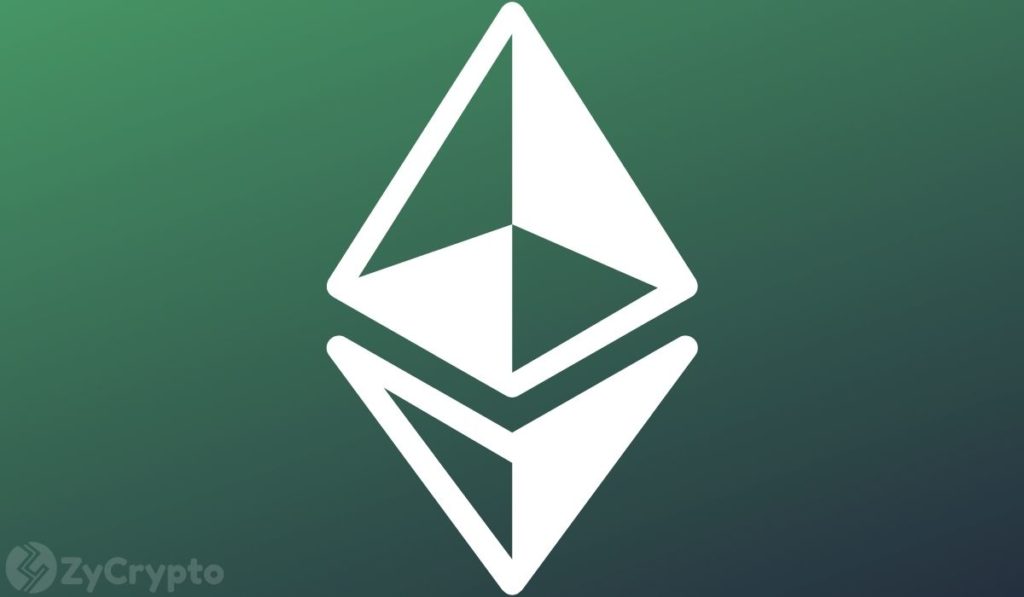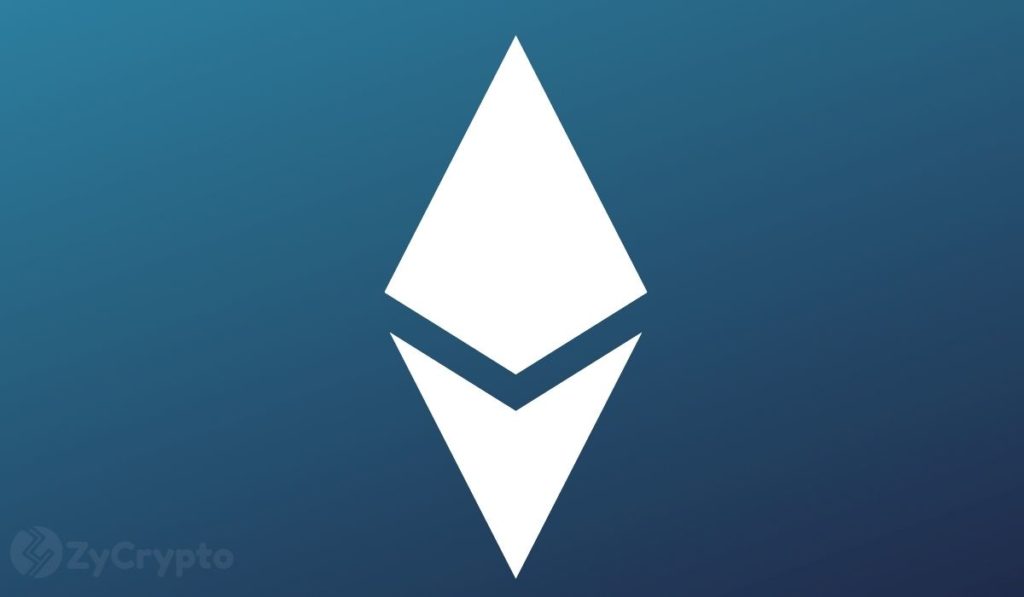2019-2-6 07:19 |
Allen Day is one of those types that is well-equipped for a world that is increasingly online more than off. as a senior data scientist, and creator of a large number of tools that are now commonly put into practice by Google, he saw something particularly interesting taking place on the Ethereum Blockchain.
While there are plenty of developers out there operating as speculative investors, or using it as a foudnation for their own projects and native tokens. He notices that there's an unusual use of AI (Artificial Intelligence) taking place on-chain.
Known as the 3rd ranked among cryptocurrencies, taking home the figurative bronze for third largest cryptocurrency in the world, being narrowly beaten out by the likes of Ripple's XRP and Bitcoin. While this is the unfortunate break for ETH, it still boasts a staggering market cap of over $11 billion on its own, in spite of the fact that it was one of the worst hit currencies out there during the long Crypto Winter of 2018.
Upon closer observation of the blockchain – the database which contains transactions that take place on-chain had demonstrated a growing volume of funds being moved around by what Day referred to as ‘autonomous agents,' which were hard at work moving funds around ‘in an autonomous fashion.'
One of the facts that makes this all the more confusing is the fact that neither Day, nor anyone else knows who developed this AI and who / what exactly it is serving to do. The suspected parties could very well be agents of various cryptocurrency exchanges which are co-operating in order to artificially increase the price of Ethereum.
“It’s not really just single agents doing things on their own,” Day argues that the more concerning matter is that they are operating in such a way as to collaborate with other agents out there. “They’re forming with other agents to have some larger group effect.”
To give a bit more of an extensive background, while Day's professional title is as a senior development advocate for Google Cloud, he more commonly refers to himself and his role as ‘customer Zero' on behalf of the computing efforts for Google Cloud. As a result of this thinking: It's his responsibility to expect levels of demand even before a specific product exists.
As a result of this, he wholeheartedly believes that the one thing that blockchain and its various projects need to do to become a worldwide phenomenon is to be more readily accessible.
One of the examples of doing this is Google of all things. With the creation and subsequent launch of its search engine, the internet became an easy to search ecosystem. And if blockchain were to do the same, it would generate what may even be billions for the wide range of projects that make up the thrusting spearhead. If Day is successful in this, the world will come to see that blockchain technology is rightfully living up to the reputation which rapidly preceeds it.
One of the projects that Day had previously been working on silently took place in 2018. Between Day and a small collection of open-source developers, they steadily began the process of uploading data for the entirety of both Bitcoin and Ethereum blockchain onto the big analytics platform used by Google: this, of course being BitQuery.
It was this move, coupled with the support of the outside developer, Evgeny Medvedev, that they had managed to create some sophisticated software that was able to search through this monumental amount of data.
During the time, the project had been given little to no publicity by any members of the team. It was in spite of this that crypto miners and coders heard about it and spread the word at a blistering pace. Within the same year, there were over 500 projects that were established based on this new suite of tools built by Medvedev, Day, and a small team of developers.
These projects themselves would capitalize on the suite of tools by trying to examine and subsequently predict the future price of bitcoin, as well as analyzing the different kinds of disparities that exist between holders of ETH.
While these remarkable minds are responsible for this innovative set of tools. As a whole, Google is a distant third place when compared to its rivals on the subject of cloud-based computing.
Over the course of 2018, for example, Google drew a total of $3 billion in revenues from its cloud services. This figure is in stark contrast to the total turnover for Amazon and Microsoft: which managed to generate $27 billion (Amazon) and $10 billion (Microsoft).
It is the hope of Day and his team that the project, which has steadily come to be named . as ‘Blockchain ETL' (An acronym standing for ‘Extract, Transform, Load), will allow Google to work gradually to regain ground that was initially lost to Amazon and Microsoft. But while Google is working hard in order to catch up with its rivals, Amazon and Microsoft are already working on their own blockchain initiatives. Initiatives which may result in Google being left in the dust once again.
Amazon, for example, has been working to enter blockchain with a bang over the course of 2018; launching a dedicated suite of tools to allow companies to construct, as well as manage their own distributed ledgers, and working as part of what is steadily becoming known as ‘Blockchain as a Service‘ (BaaS). In contrast, Microsoft has been involved since 2015, when it first released a number of tools usable for those participating in the Ethereum blockchain. As a result of this more extensive history, Microsoft now provides a larger number of services which come under its Azure Blockchain Suite.
Now while this earlier foray into both cloud computing solutions as well as blockchain mean that Microsoft and Amazon have a certain edge over Google, especially when it comes to building and supporting apps on blockchain. Day hopes to focus on demonstrating how blockchains are specifically being used by various users and developers, and by who exactly.
“In the future, moving more economic activity on chain won’t just require a consensus level of trust,” Day continues on to discuss in more detail, the core validating mechanism involved in the process. “It will require having some trust in knowing about who it is you’re actually interacting with.”
In a more simplistic way – should a blockchain become increasingly mainstream over time, a number of the features which provide users with greater levels of anonymity may have to be abandoned to compensate.
Day, hailing from California, or specifically Placer County, he managed to obtain his first computer aged 5. From there, Day took to coding and programming like a fish to water: going on to write his own programs by age 6. One of his other passions came from the life sciences like Geology and Paleontology. This would go on to be a permanent passion: leading to his eventual graduation from the University of Oregon with a dual degree in biology and Mandarin.
He would go on you use his proficiency in biology to study for his doctorate in human genetics at the UCLA, and dedicated his time to that and building an accompanying computer program which would be used to browse the human genome.
Eyes on the Ripple – Visualizing XRPDuring his time studying at UCLA, Day began making use of distributed computing, which is a concept that comes greatly into play when it comes to blockchain technology. These allow for the storage of data on a larger network of interconnected, independent computers.
It was in the early 2000s that Day put this system to use in order to analyze large quantities of information and data which makes up the human genome. In order to fulfill the computer processing demands of processing that volume of information, Day hooked together with a number of small computers into a network. The end result was a significant increase in the computing power that he could call upon.
“Distributed-systems technology has been in my tool kit for a while,” Day says. “I could see there were interesting characteristics of blockchains that could run a global supercomputer.”
Day was subsequently hired by Google in 2016 in order to work in the field of health and bioinformatics. From there, Day steadily moved into the world of blockchain technology, which was rapidly becoming one of the hottest areas for distributed-computing efforts worldwide. But while Days previous experience stems from areas that don't otherwise apply to decode blockchain.
To give a broader idea of just how challenging it was to delve deeper into blockchain applications, Before Day and Medvedev had managed to release their suite of tools, anyone interested in searching a specific blockchain would require a special kind of software referred to as ‘Block Explorers.' This software allowed users to only track specific transactions, each of these being labelled with a unique mixture of 26+ alphanumeric characters.
In stark contrast to this, Google's Blockchain ETL software allows users to conduct more general searches, allowing them to also browse a broader ecosystem of transactions.
While there are certainly going to be those that are not content with just words on the matter of how effective Blockchain ETL is for exploring blockchain transactions. Day took the opportunity to demonstrate this, as well as how it can be used in order to significantly improve the cryptocurrency economy as we know it.
In order to do this, Day applied these same tools in order to more closely examine a hard fork process, otherwise known as an irreversible split within a specific blockchain database. The one that he observed was the hard fork which took place within the Bitcoin Cash system during the summer of 2017.
The origins of this specific split took place in the wake of a growing rivalry and subsequent ‘war' that resulted in the bitcoin cash communities being split between those that wanted to leave Bitcoin the way it was, and another group that sought to develop a cryptocurrency community that would be able to create a cryptoasset that more closely resembled a digital currency.
Through the application of Google's BigQuery, Day found that Bitcoin Cash: instead of increasing in the amount of micro-transactions that took place within its ecosystem, as its more outspoken members of the communities and developers affirm. Instead, these assets are, in fact, being hoarded among big holders of Bitcoin Cash.
“I’m very interested to quantify what’s happening so that we can see where the legitimate use cases are for blockchain,” Day says. “Then we can move to the next use case and develop out what these technologies are really appropriate for.”
The ongoing projects spearheaded by Day has resulted in the direct inspiration of other developers and programmers out there. Tomasz Kolinko, for example, is a programmer from Poland who went on to provide a service which allows users to analyze smart contracts, which is a feature that exists within blockchain that is designed to directly and clearly enforce contracts between users.
These can take the form of collateralized loans, and don't require the input or action from a third party, such as lawyers. Kolinko himself felt a great deal of frustration when it came to querying elements of blockchain.
In December, Kolinko finally met and spoke with Day during a hackathon that took place in Singapore. It was within the span of a month, Kolinko had went on to apply a number of Google-based tools that were developed by Day, going on to search a smart contract feature referred to as ‘selfdestruct,' which was designed to set a specific time of expiry for a smart contract.
Applying his own software in relative concert with Day, it took Kolinko a grand total of 23 seconds to fully search through approximately 1.2 million smart contracts – an act that would have originally taken a matter of hours to complete.
The end result? Kolinko had foudn that a total of 700 smart contracts has an in-built self destruct mechanism that would let any outside user kill off any associated smart contract, whether or not they had the authority to do it or not.
“In the past, you couldn’t just easily check all the contracts that were using it,” Kolinko says. “This tool is both the most scary and most inspiring I’ve ever built.”
From here, Day is now working assiduously to expand this project in order to reach far beyond just Bitcoin and Ethereum to encompass more blockchains. This push would include ZCash, Dash, Bitcoin Cash, Ethereum Classic, Litecoin, and Dogecoin, all of which are being added to Google's BigQuery. One thing that makes the process of adding blockchains easier is that independent developers are working to load their own data stacks onto Google.
In August 2018, a developer from the Netherlands called Wietse Wind proved to be one of the biggest contributors, uploading a grand total of over 400 gigabytes of transaction data from the blockchain and transaction solution Ripple (XRP). The data provided by Wind, which he continually updates as well as adds to every fifteen minutes, encouraged other developers and designers, more specifically the fellow resident of the Netherlands, Thomas Silkjaer, to generate an accompanying heat map to show flows of cryptocurrency.
“Google has been a bit of a sleeping giant in blockchain,” concludes Kieren James-Lubin, the CEO of BlockApps, who is also taking part in an enterprise initiative in conjunction with Google to sell blockchain apps.
Alongside Days contribution, Google has since filed a number of patents affiliated to blockchain, which includes one that was successfully filed in 2018 in order to use a system called a ‘Lattice' of blockchains working together in an interoperable ecosystem in order to increase the level of security within it. This is a major deal when considering the level of fraudulent activities within the blockchain world.
Google has also been pushing its population of developers to develop apps within the Ethereum blockchain. Google's venture company, Google Ventures has made an increasing amount of investments in cryptocurrency facing startups.
Bitcoin (BTC), Ethereum (ETH), XRP (Ripple), and BCH Top Coin Price Watch (Feb 5th)
origin »Ethereum (ETH) на Currencies.ru
|
|
















